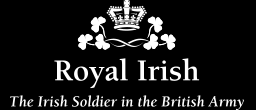Anglo-American War, 1812-1815

|
| Robert Ross by Thomas Heaphy, 1813-1814 |
This is better remembered as the 'War of 1812' and followed the American declaration of war on 18 June 1812. The United States was retaliating to the perceived British impediment of trade and succour between America and France during the Napoleonic Wars. However, those American politicians known as 'War Hawks' had ambitions to expand into the Great Lakes, the British colonies of Upper and Lower Canada and also westwards into the Indian Nation territories where resistance was supported by the British.
You can read more about the involvement of the 2/89th Regiment by clicking on the following listings:
It was Major General Robert Ross from Rostrevor, County Down, who, in 1814, commanded the British force that occupied Washington, hoisted the (British) Union Flag and set fire to many public buildings including the President’s Mansion now known as the White House.* This was the only time in the history of the United States that the capital has been invaded and captured. An extract from Ross’s personal letters was published in the United Service Journal in 1829 and included his short description of finding the White House abandoned:
‘As the Gazette announcing the despatches will give you
a full account of our proceedings, I shall only state here, that so unexpected
was our entry and capture of Washington; and so confident was Maddison [sic]
of the defeat of our troops, that he had prepared a supper for the expected con-
querors; and when our advanced party entered the President's house, they
found a table laid with forty covers. The fare, however, ... was voraciously
devoured by John Bull; and the health of the Prince Regent and success
to his Majesty's arms by sea and land, was drunk in the best wines,
Maddison having taken to his heels and ensured his safety on
the opposite bank of the river by causing the bridge to be broken down’
*
The architect of the building was James Hoban, from Callan, County Kilkenny and the design was strongly influenced by Leinster House, the current Irish Parliament Building in Dublin. At the time Hoban was studying at the Dublin Society's Drawing School in the late 1700s, it was the home of the Norman-Irish Earl of Kildare. When Kildare was elevated in peerage to become the Duke of Leinster, he commissioned the befitting and grand residence that he named Leinster House.





